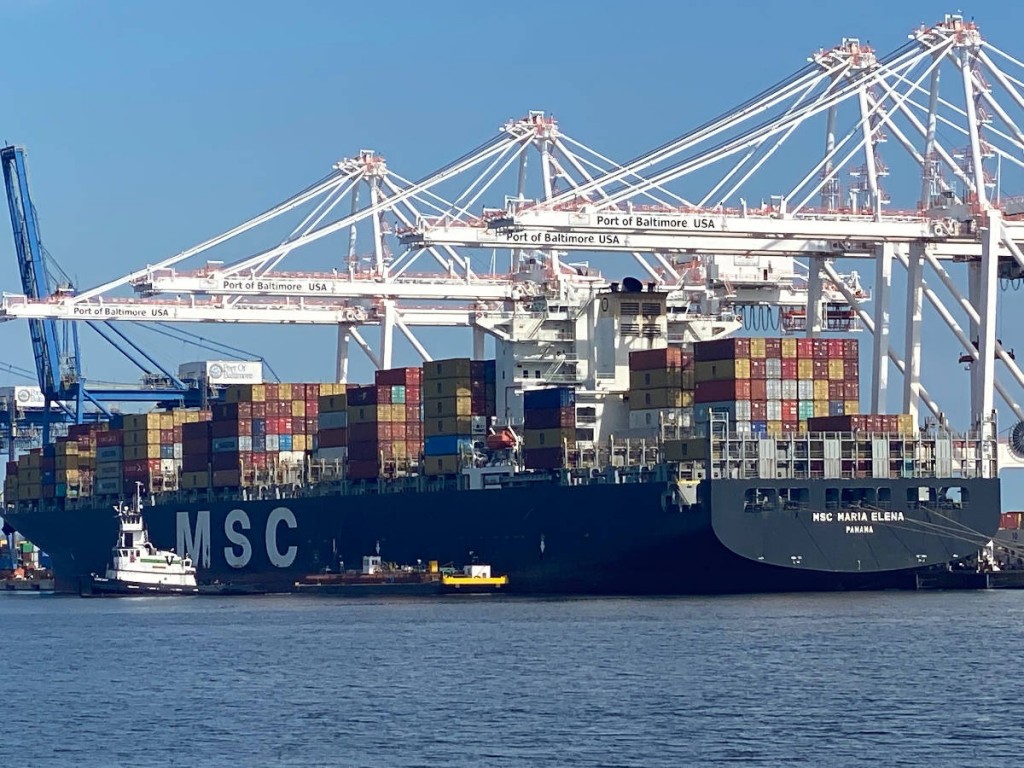Port Closes Out 2020 With Significant Gains, Narrowing the Gap in Year-End Totals
The Helen Delich Bentley Port of Baltimore’s state-owned, public marine terminals finished a challenging 2020 in strong fashion, with key cargo commodities showing significant gains in recent months despite the continued impact of COVID-19.
“Throughout the pandemic, the Port of Baltimore has been a barometer of Maryland’s economic recovery, and the latest figures give us great optimism for the new year,” Governor Larry Hogan said. “The Port’s healthy rebound is an indicator of increased consumer demand, and we’ve proven we have the talented workforce and the infrastructure to answer that demand.”

December continues rebound from Covid-19 lows
December saw continued significant increases for autos/light trucks, general cargo, containers and roll on/roll off machinery compared to the COVID-19 low points in May and June. Autos and light trucks, with 59,793 units, was up 288.8% compared to the low point in May. Roll on/roll off equipment, with 67,063 tons, was up 35.8% over the low point in June. General cargo, at 946,355 tons, was up 29% over the low point in June; and containers, with 53,057 boxes, was up 11.9% compared to June’s low point.
General cargo’s December 2020 numbers represent an 8% increase over December 2019 – the third straight month for year-over-year gains. The figure for containers is a 6% increase over December 2019, also the third straight year-over-year monthly gain. Roll on/roll numbers are 1% over December 2019.
2020 down compared to 2019, but strong finish narrows the gap
The COVID-19 pandemic had a tremendous impact on the maritime shipping industry in 2020. Key cargo commodities at the Port of Baltimore’s public terminals were down for the year compared to 2019, but the Port’s strong recovery in the second half of the year helped narrow those declines dramatically:
For all of 2020, containers, with 632,307 boxes, were down 3.7% compared to 2019. General cargo was down 6.4% from 2019 with 10,387,723 tons; roll on/roll off was down 23.9% with 689,708 tons; and auto/light trucks had 468,401 units, down 25.8% from 2019.
“When you consider the global economic impact of COVID-19 throughout the year, the rebound we’ve seen in recent months at the Port of Baltimore is nothing short of tremendous,” said Maryland Department of Transportation (MDOT) Secretary Greg Slater. “Our strong finish to 2020 reflects highly on Maryland’s economy, the dedication of our Port workforce and the maritime industry’s confidence in our ability to safely and efficiently deliver their cargo to the marketplace.”
“Last year was an extremely challenging year for our industry, but we have great momentum at the Port of Baltimore and a lot of positive trends taking us into 2021,” said MDOT Maryland Port Administration (MDOT MPA) Executive Director William P. Doyle. “The rise in e-commerce is a significant factor in our recovery, and the Port of Baltimore is well-equipped to handle continued e-commerce increases because of the number of distribution, fulfillment and sorting centers in close proximity. While our December numbers are encouraging, we are still in a COVID-19 environment and that continues to make this an unpredictable international maritime trade industry.”
The Port’s recent volume includes 13 “ad hoc” ship calls since mid-July totaling nearly 18,000 Twenty-foot Equivalent Unit (TEU) containers. Ad hoc ships are vessels that were diverted to Baltimore that were not on a regularly scheduled service.
The Port continues to gain new business, as well as increased business from existing customers. In February, the first ship under the Port of Baltimore’s new contract with the Metsa Group of Finland will arrive. Ocean carriers Spliethoff Group and Royal Wagenborg were recently selected to service Metsa Group and Logistec Corp. – this will consolidate all Metsa’s Mid-Atlantic volumes through the Port of Baltimore. The new multiyear contract increases Metsa’s footprint at the Port and will bring hundreds of jobs and more than 370,000 tons of pulp used to produce paper and forest products used to produce packaging material. To accommodate the increase, MDOT MPA will use at least four warehousing structures that have been underutilized or vacant for the past five years.
As part of the Port’s continuing public-private partnership (P3) with Ports America Chesapeake, construction for a second, 50-foot-deep berth at the Seagirt Marine Terminal is moving forward. The additional berth will allow the Port to handle two supersized ships simultaneously. Four additional Neo-Panamax cranes are scheduled to arrive in July and will be operational later this year. The growing container business accentuates the need for the Howard Street Tunnel expansion project in Baltimore, which will accommodate double-stacked rail cars to move cargo to and from the Port. That project is benefiting from public-private investment between the federal government, Maryland, CSX and others.
The Port of Baltimore generates about 15,300 direct jobs, with nearly 140,000 jobs overall linked to Port activities. The Port ranks first among the nation’s ports for volume of autos and light trucks, roll on/roll off heavy farm and construction machinery, and imported gypsum. It ranks 11th among major U.S. ports for foreign cargo handled and ninth for total foreign cargo value.
The health and safety of the Port of Baltimore workforce is paramount, and the public marine terminals have maintained stringent CDC-recommended health and safety measures to ensure safety of its labor force, tenants and partners. MDOT MPA encourages the use of face coverings and social distancing measures for individuals working at the marine terminals, and encourages teleworking for those able to do so. Temperature screenings and other preventative procedures are also continuing.











